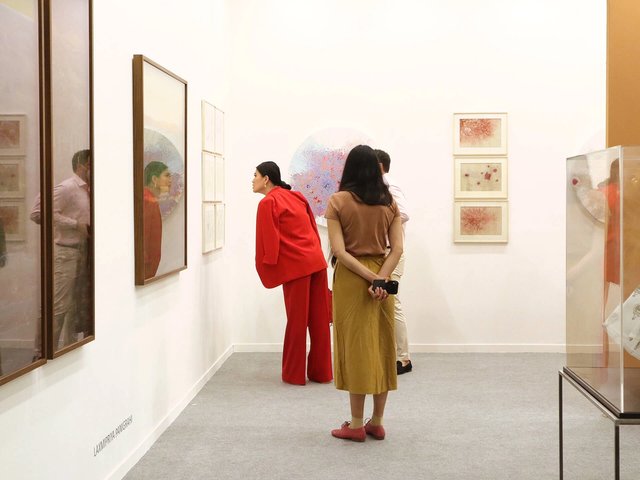When Pakistan’s president General Pervez Musharraf opened the new National Art Gallery in Islamabad at the end of August, he asked the country’s artists to help “project a soft, peaceful and tolerant image of Pakistan, to counter the negative propaganda”. Accordingly, much of the work in the gallery’s opening exhibition “Moving Ahead” takes a strong, anti-military stance.
With over 600 works by some 126 Pakistani artists, the show is a comprehensive survey of the country’s contemporary art scene. Though many of the artists have had their work displayed in smaller exhibitions abroad, such as “Beyond the Page”, which opened at Asia House in London in 2005 and is currently touring the UK, Durriya Kazi, an artist from Karachi, says that “this is the first time we have seen the range of art being produced in Pakistan in our country”.
Most of the work on display is highly critical of contemporary politics. Kazi’s project Witness was made in response to the growing number of casualties in Iraq. The installation consists of a pair of photographs depicting clay figures that have been placed in public spaces in Islamabad and slowly allowed to deteriorate over time. The artist says these are “generic”, representing soldiers, women and children killed during the war (above).
Jamil Bloch’s World Plane is a massive reproduction of the tail end of a fighter plane, half-buried in the gallery floor. And a video Left Right by Hamra Abbas, who is also showing at the current Istanbul Biennial (p47), has a string of cookie-cutter soldiers with AK-47 rifles marching across a background of land, sea and air.
The National Art Gallery has taken more than 25 years to complete, because of Pakistan’s political upheavals, including the military coup that brought General Musharraf to power. There has only been sporadic political will to support the new gallery and provide funding for it after it was first proposed in 1981 by then president General Muhammad Zia-ul-Haq. Despite his plea to artists at the opening, President Musharraf, whose backing finally brought the gallery to completion and who has been named its “patron-in-chief”, has not placed any restrictions on the art that can be shown there; the Ministry of Culture has promised it will not censor any work.
In 2005, the government provided 456m rupees ($7.5m) to finish construction of the museum. The entire project has cost around 542m rupees ($9m).
Designed by the Pakistan-born architect Naeem Pasha, the four-storey, brick building fuses elements of Buddhist, Hindu, Islamic and British colonial architecture. It houses 14 galleries, as well as a 400-seat auditorium, theatre and library, among other public facilities.
Most of the works on view are owned by the Pakistan National Council of the Arts, with some loans from private collectors.
o National Art Gallery, Islamabad, Plot 5 F-5/1
% +92 51 920 5274, www.pnca.org.pk “Beyond the Page” is on view at the Midlands Art Centre in Birmingham until 21 October.



